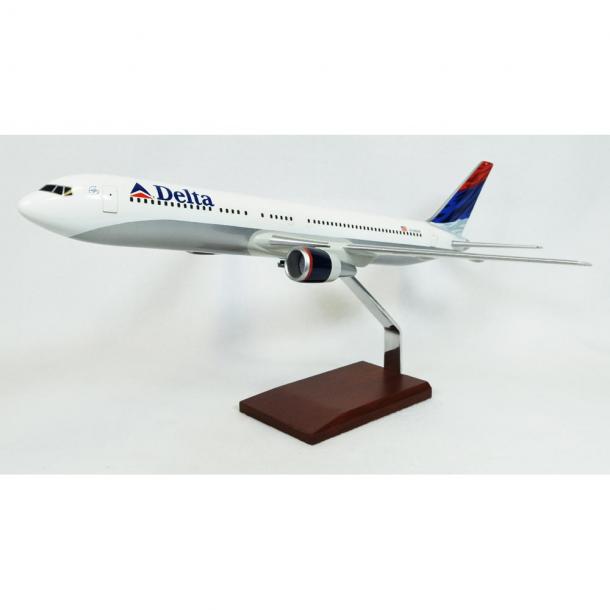B767-300 DELTA MODEL

With the 707 aging, Boeing decided to produce a mid-size plane to fit in between the 727/737/757 and the 747. The 767 was introduced in the early 1980s. It is a widebody twinjet airliner capable of carrying between 181 and 245 passengers in a standard three-class configuration depending on the variant and has a range of 5,200 to 6,950 nautical miles. The 767 has an economy class seat-to-aisle ratio of 3.5 seats per aisle, making for quicker food service and quicker exit of the plane than many other jetliners, which normally have 4-6 seats per aisle. The 767 sold very well from the late 1980s to the late 1990s, with a decrease during the recession in the early 1990s. After strong sales in 1997, sales have declined significantly, due to the economic recession of the early 2000s, increased competition from Airbus, and the recent emergence of a direct replacement program, the Boeing 787.
In February 1982, Boeing announced that it was developing a stretched version of the 767-200. The resulting 767-300 is a medium to long range widebody airliner, with the flightdeck and systems carried over directly from the 767-200. It features a 6.42 m stretch consisting of fuselage plugs forward and behind the wing centre section. Other changes were minor. The 767-300 had its maiden flight on January 30, 1986 and was awarded certification and entered service in September of the same year.
Delta Air Lines has an all-Boeing fleet. It was one of the last major airlines to operate the original Boeing 737-200 models until the last aircraft retired in 2006. Delta has the largest fleet of 757 and 767 aircraft of any airline. It is currently the worlds largest 767 operator, with approximately 102 planes. Their hub at Hartsfield-Jackson Atlanta International Airport has the highest number of 767 operations in the world.

Отзывы ещё не добавлены